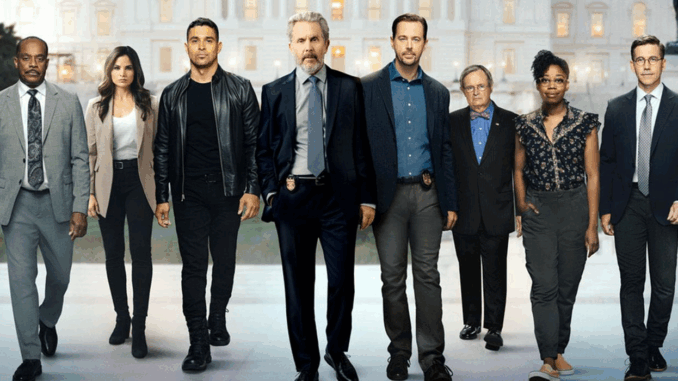
There’s no denying that NCIS has a special place in our hearts. With charismatic agents, gripping military cases, and the quirky charm of characters like Abby Sciuto and Gibbs’s infamous rules—it’s been a comfort show for two decades.
But what if I told you that the forensic procedural genre hit its peak before NCIS even aired?
That’s right—CSI: Crime Scene Investigation beat it to the punch and arguably did it better.
Let’s explore why.
CSI Walked So NCIS Could Run
A Genre-Shifting Debut in 2000
Premiering on CBS in October 2000, CSI: Crime Scene Investigation wasn’t just a show—it was a cultural phenomenon. It changed how TV audiences saw crime dramas forever.
Before CSI, most shows focused on cops chasing suspects. But this one? It put forensic scientists at the center. Lab geeks became rockstars, and audiences were hooked.
CSI’s Immediate Impact
-
Won Emmy Awards and became one of the most-watched shows globally.
-
Spawned three spin-offs: CSI: Miami, CSI: NY, and CSI: Cyber.
-
Led to a real-world boom in forensic science program enrollments.
Why CSI Beats NCIS in Forensic Accuracy & Style
Real Science, Not Just TV Drama
CSI was laser-focused on crime scene analysis—from blood spatter interpretation to fiber tracking. While NCIS has forensic elements, CSI made science the star.
Ever seen someone analyze gunshot residue under an electron microscope on NCIS? Probably not.
Groundbreaking Visual Style
CSI didn’t just talk about evidence—it showed it in mind-blowing ways:
-
Bullet-time 3D renderings of crime scenes.
-
Microscopic camera dives into wounds or evidence particles.
-
Time-slowing edits that took you inside the crime.
Gil Grissom vs. Leroy Jethro Gibbs – Who Wins?
The Intellect vs. The Intuition
-
Gil Grissom (CSI): A bug-loving, logic-obsessed forensic mastermind.
-
Leroy Jethro Gibbs (NCIS): A stoic, gut-driven ex-Marine with a toolbox of rules.
They’re both legends, but Grissom embodied the science-first ethos of forensic TV. He didn’t need to interrogate a suspect—he’d rather let the evidence do the talking.
Gibbs relied on instinct. Grissom relied on data.
Which feels more like a forensic procedural?
Ratings, Popularity, and Global Reach
CSI Was a Global Juggernaut
-
At its peak, CSI drew more than 30 million viewers per week in the U.S. alone.
-
It was named “the most-watched TV show in the world” in 2006 by Eurodata TV Worldwide.
-
While NCIS eventually overtook CSI in longevity, CSI broke ground first.
The “CSI Effect” in Real Life
The show was so influential, it created the “CSI Effect”—a term used by lawyers and judges to describe how jurors expected forensic evidence in every case because of the show’s influence.
Now that’s impact.
The CSI Formula That Changed Everything
Fast-Paced, But Detail-Oriented
Each CSI episode was packed with:
-
Multiple overlapping cases.
-
Forensic breakthroughs that felt earned, not convenient.
-
Teamwork that emphasized scientific process over shootouts.
Lab Techs as Heroes
Unlike traditional police procedurals, CSI made lab work look heroic. These weren’t just background characters—they were central to the resolution of every mystery.
Spin-Off Success vs. NCIS Universe
CSI Had More Experimental Spin-Offs
-
CSI: Miami – With Horatio Caine’s sunglasses and one-liners.
-
CSI: NY – Grittier tone, set in post-9/11 New York.
-
CSI: Cyber – Tech-focused crimes and digital threats.
Each spin-off carried the original’s DNA but adapted to new environments.
NCIS has its own extended universe—NCIS: LA, NCIS: New Orleans, NCIS: Hawai‘i, and the recent NCIS: Sydney—but most still follow the original military-crime formula.
CSI diversified the genre. NCIS stuck with what worked.

Tone and Realism—CSI Wins in Grit
Darker, Grimmer, More Gritty
NCIS balances tension with humor, quirky banter, and personal subplots.
But CSI wasn’t afraid to go full noir. Dead bodies were shown in detail. Victims had stories. It felt more like Silence of the Lambs than a network procedural.
Cases Inspired by Real Science & Crime
From BTK-style serial killers to toxic mold causing hallucinations, CSI used real-world forensic phenomena to drive its episodes.
CSI’s Cinematic Approach Changed TV Forever
A Visual Feast in Prime Time
-
Color grading that shifted with city/setting.
-
Dramatic cuts to slow-motion lab simulations.
-
Music that matched the emotional tone (who can forget The Who’s opening song?).
Compare that to NCIS’s more grounded, straightforward filming style—CSI just felt bigger.
Awards & Industry Recognition
CSI’s Trophy Shelf
-
6 Emmy Awards and over 40 nominations.
-
People’s Choice Awards multiple years in a row.
-
Spurred real-world interest in criminalistics and lab careers.
NCIS has been recognized more for popularity than artistry. CSI had both.
Final Verdict – CSI Did It First, And Arguably Better
I love NCIS, truly. The characters are memorable, the cases compelling, and the longevity impressive.
But let’s not forget—CSI laid the forensic foundation. It turned science into prime-time drama, lab techs into household names, and crime scenes into immersive experiences.
Without CSI, there is no NCIS as we know it.
❓ FAQs
1. Which show came first, NCIS or CSI?
CSI debuted in 2000. NCIS followed in 2003. So CSI was first.
2. Which show is more scientifically accurate?
CSI puts a stronger focus on forensic science, though it occasionally dramatized the speed of results. NCIS leans more toward character-driven storytelling.
3. Who is a better team leader: Grissom or Gibbs?
Depends on what you value—Grissom for scientific logic, Gibbs for loyalty and instincts.
4. Are both shows still running?
NCIS is still producing new episodes and spin-offs. CSI: Vegas is the most recent continuation of the CSI franchise, launched in 2021.
5. Did CSI influence real forensic science careers?
Yes. The “CSI Effect” led to a major increase in forensic science enrollment and a shift in jury expectations during trials.
